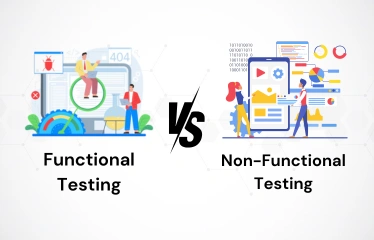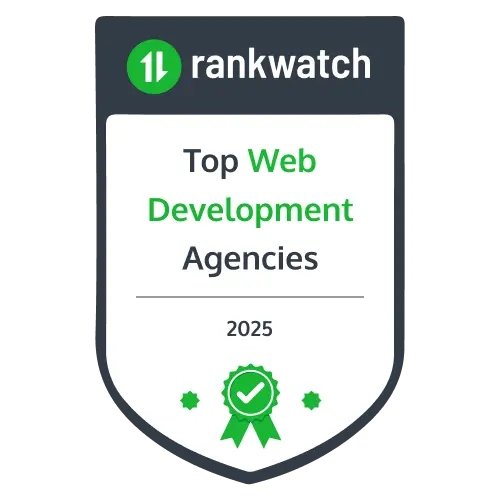By: Nilesh Jain
|
Published on: September 22, 2025
Introduction
Imagine this: your product team has pushed a critical feature to production on AWS. A week
later, you decide to extend to Azure and Google Cloud to reach more users. But then, unexpected
failures start cropping up in certain regions or under certain loads.
You thought your service was resilient, but multi-cloud introduced new failure modes. Your users
are seeing errors, latency spikes, or worse: downtime.
Modern architectures, microservices, containers, and serverless bring agility, but they also
amplify fragility across environments. Without proper cloud testing built for
multi-cloud, you risk instability, cost overruns, and reputational damage.
At Vervali, we specialize in cloud-native testing: validating your applications
across Kubernetes clusters, serverless functions, hybrid setups, and more. In this article,
you’ll learn:
- What cloud-native and multi-cloud testing mean
- Why traditional testing practices fall short
- How Vervali approaches testing across DevOps, containers, serverless, and
hybrid clouds
- Real benefit angles, cost tradeoffs, and local relevance for India-based
firms
- How to take the next step with Vervali
What Is Cloud-Native & Multi-Cloud Testing?
Cloud testing broadly refers to
testing services
running in cloud environments rather than on-prem infrastructure.
Multi-cloud testing means you test across more than one cloud provider (e.g.,
AWS, Azure, GCP) to ensure feature consistency, failover, portability, and performance parity.
Kubernetes testing ensures your microservices deployed in Kubernetes clusters
behave reliably under scaling, updates, node failures, and cross-zone traffic.
Serverless testing validates your functions (e.g., AWS Lambda, Azure Functions)
for cold starts, concurrency limits, retries, and integrated dependencies.
Hybrid cloud testing covers scenarios where part of your system lives
on-premises and part in public cloud, or across private + public clouds.
The common thread: test in the same environment your users will use, under real-world patterns.
A table summarizing test focus areas:
| Environment / Focus |
Key Risks to Test |
Typical Methods / Tools |
| Kubernetes / Container |
Pod crashes, node failures, autoscaling, rolling updates |
Chaos engineering, integration tests, load testing |
| Serverless |
Cold starts, timeout, retry loops, concurrency limits |
Function-level tests, API endpoint tests, mocks |
| Multi-cloud |
Latency differences, API differences, region outages |
Cross-cloud regression suites, failover drills |
| Hybrid / On-prem & Cloud |
Network partitions, data sync, config drift |
End-to-end integration, spoofed network failures |
| DevOps / CI/CD pipeline |
Deployment regressions, environment drift |
Pipeline gating tests, shift-left QA, automated smoke tests |
This layered approach helps you catch drift, cross-environment inconsistencies, and edge
conditions before they hit production.
Why Traditional QA Fails in Cloud-Native Contexts
Legacy QA approaches assume static infrastructure: fixed servers, monolith apps, deterministic
environments. But modern systems are dynamic and ephemeral:
-
Containers and serverless Spin up and down rapidly; you can’t assumption-check by pointing
to “a server.”
-
Your dev, staging, and prod may differ in cloud setup. A test that passes in staging might fail under region-specific configuration in prod.
-
Uncontrolled dependencies External APIs, cloud services, region-specific failures, quotas.
-
Failover & chaos testing Seldom part of legacy QA, but critical in cloud contexts.
-
Pipeline as part of the product Deployment, rollback, and scaling automation become testable
surfaces.
Hence, cloud-native testing must integrate with DevOps pipelines, be infrastructure-aware, and
simulate real failures across cloud boundaries.
Vervali’s Approach: Testing That Works Across Clouds
-
Test Strategy & Planning (DevOps Testing): We begin by mapping your
architecture: microservices, containers, serverless, APIs, and data flows. We define test
personas, regions, failure domains, and SLAs. This aligns QA with your multi-cloud goals.
-
Infrastructure-as-Test Code & Environment Parity: We ensure test
environments mirror production as closely as possible, same Kubernetes versions, networking
setups, cloud services. Infrastructure is versioned, so drift is detected.
-
Container & Kubernetes Testing:
- Validate container images, readiness, and liveness probes.
- Run integration tests spanning services.
- Introduce simulated node failures, pod restarts, rolling upgrades, and network
partitions (chaos testing).
- Use service meshes or sidecar proxies to test circuit breaks, retries, and rate
limiting.
-
Serverless & Function Testing:
- Unit and integration tests per function.
- End-to-end flows across serverless functions + API gateways.
- Test concurrency limits, warm/cold invocation, timeouts, and retries.
- Simulate cloud events (e.g., S3 triggers, queue messages) and error paths.
-
Multi-Cloud & Hybrid Testing:
- Deploy test suites across cloud providers (AWS, Azure, GCP) to detect behavior
differences.
- Failover drills: traffic shifts, data sync, and consistency maintained if one
region/provider fails.
- Test latency and consistency across zones.
- For hybrid setups, test data synchronization, network segmentation, firewall rules,
and fallback for on-prem parts.
-
Resilience & Chaos Testing: Inject faults (e.g., instance crashes, DB
unavailability, network latency) at scale to validate system recovery, failovers, and
auto-recovery logic.
-
Automation, Regression, and Continuous QA: Every code push triggers key
smoke tests, container tests, and region-specific API checks. We also maintain full
regression suites to run nightly across clouds.
-
Reporting & Monitoring Feedback: We integrate with monitoring systems
(CloudWatch, Azure Monitor, Prometheus) and surface anomalies, regressions, and environment
drifts in dashboards.
With this end-to-end plan, you get confidence that your system works reliably in real-world
multi-cloud conditions.
Benefits & Cost Realities
Benefits you’ll see
- Reduced downtime & user impact: find region-specific failures before
your users do.
- Faster release cycles: with confidence built in, you can ship more
frequently.
- Better cloud ROI: avoid over-provisioning due to unknown failure margins.
- Portability: the ability to shift providers without introducing bugs.
- Scalable resilience: system handles spikes, failures, and cloud outages.
Cost & tradeoffs
- Setup cost: defining multi-cloud test pipelines, building
infrastructure-as-code, and creating cross-cloud deployment scaffolds.
- Test compute overhead: test runs across multiple clouds increase the bill.
- Maintenance overhead: You must maintain parity among test environments and
production changes.
- Tooling investment: chaos tools, cross-region orchestration, custom
scripts.
Yet, compared to the risk of outages, reputation damage, and rollback effort, the investment
often pays off many times over.
India & Local Relevance: Why This Matters to Indian & APAC Companies
- Many Indian enterprises are moving from on-prem or single-cloud setups to hybrid and
multi-cloud (e.g., AWS + Azure).
- Local data regulations (India’s data localization, privacy laws) demand testing in specific
zones or clouds.
- Outages or downtime in India (or APAC regions) due to region-specific AWS/Azure failures can
happen; only multi-cloud testing ensures regional reliability.
- Cost sensitivity is high in Indian budgets; optimized testing (regional sampling rather than
full exhaustive across all zones) yields good coverage at controlled cost.
- Vervali, headquartered in Mumbai (Vasai-Virar
area), understands Indian infrastructure, compliance, latency patterns, and local cloud
region details.
- If you're an Indian SaaS, enterprise, or product-driven company expanding regionally or
globally, it's critical to bake cloud-native resilient testing from day one.
Mini Case Scenario (Hypothetical / Inspired)
A SaaS company in Mumbai had its core API running on AWS Mumbai. They decided to expand to
Azure South India for redundancy. After deployment, in Azure, occasional API calls were
timing out for customers near Chennai, but all were passing in AWS. The core error stemmed
from a configuration misalignment in retries + circuit-breaker logic across clouds.
Vervali stepped in: we deployed test suites simulating cross-region traffic,
ran chaos injections, and uncovered misbehaving fallback paths. We patched the logic, re-tested
across both clouds, and validated failover. The result: zero user impact and smooth expansion.
This illustrates the gap that multi-cloud QA bridges.
How to Engage with Vervali for Cloud-Native Testing
- Book a free consultation — start with an architecture audit and test strategy.
- Pilot test module — pick one service, one region, one failure scenario to validate
the approach.
- Scale across services & clouds — expand tests progressively.
- Ongoing engagement — continuous QA, DevOps alignment, monitored regression.
- Augmentation or full managed testing — Vervali can embed with your team or take full
ownership. (See Vervali’s Managed Delivery and Dedicated Teams models)
You can talk to our team now
Conclusion
Testing a cloud-native, multi-cloud product isn’t just an add-on; it’s essential. Without
testing tailored to containers, serverless, DevOps pipelines, hybrid clouds, and cross-provider
failure modes, you risk hidden bugs, regional downtime, and user frustration.
Vervali combines deep QA knowledge, cloud infrastructure expertise, and local
experience (headquartered in Mumbai, India) to help you ship confidently and reliably across
clouds. Whether you’re just starting your multi-cloud journey or scaling resilience globally, we
can help.
Frequently Asked Questions (FAQs)
Cloud-native testing is the practice of testing applications in
environments that mimic cloud architectures, containers,
microservices, serverless, rather than static servers.
Testing across clouds discovers provider-specific quirks, failover
behavior, latency issues, and region-specific performance variation.
It is more expensive than single-cloud testing, but you can optimize
by sampling key regions, scheduling off-peak test runs, and focusing
on critical paths.
Yes. Tools like chaos engineering frameworks (Chaos Mesh, Litmus),
service mesh testing, Istio, and Kubernetes-aware test harnesses
help validate resilience.
By creating unit + integration tests, triggering functions under
load, simulating errors, injecting delays, and chaining them in
end-to-end flows.
Hybrid-cloud involves part on-premises and part in the cloud;
multi-cloud involves using multiple public cloud providers. Testing
covers synchronization, consistency, and failure modes in both.
Early, ideally when you begin building distributed, containerized,
or serverless systems. The earlier, the cheaper to adapt.
Vervali brings experience in multi-cloud, DevOps alignment,
container & serverless testing, and a local Indian presence. We
combine infrastructure expertise with QA skills.
Depends on complexity: a pilot can take 2–4 weeks. Full rollout may
take 2–3 months across modules.
Yes. We offer managed delivery, resource augmentation, or embedded
QA teams, all models include updates and continuous alignment.


























































































